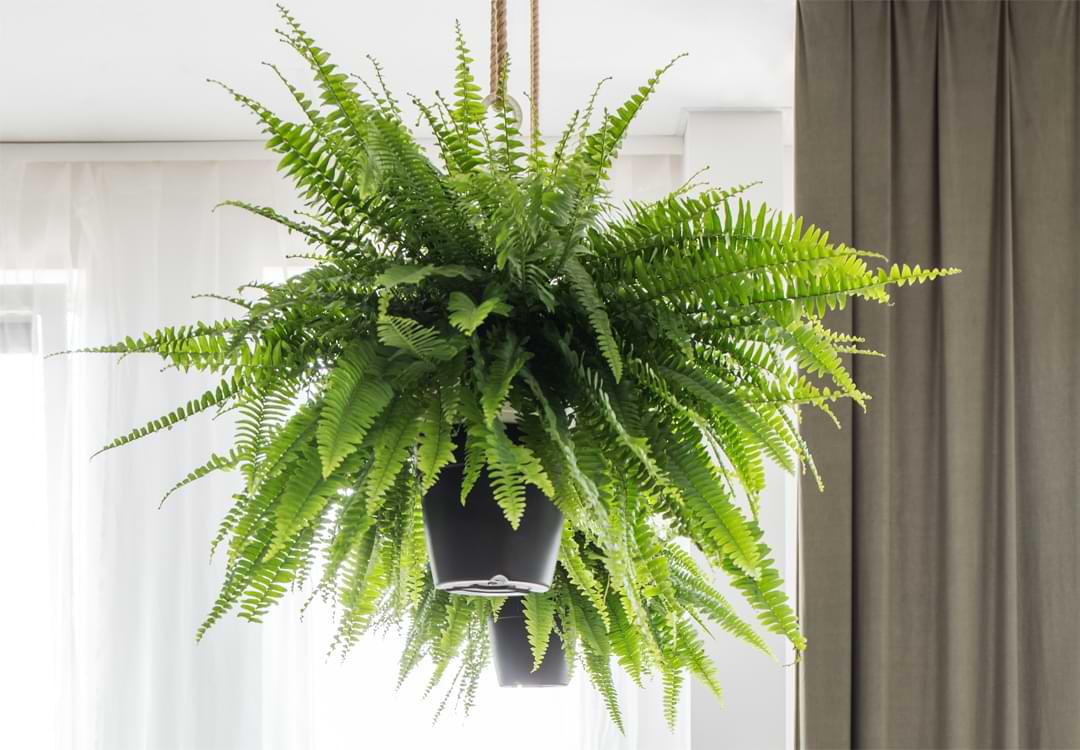Table of Contents
- Fern Varieties
- Nephrolepis exaltata (Boston fern)
- Platycerium (Staghorn Fern)
- Adiantum raddianum (Maidenhair Fern)
- Nephrolepis cordifolia “Duffii” (Lemon Button Fern)
- Microsorum musifolium (“Crocydyllus” Crocodile Fern)
- Asplenium nidus (Bird’s Nest Fern)
- Microsorum diversifolium (Kangaroo Paw Fern)
- Indoor Fern Care
Fern Varieties
Ferns are popular indoor houseplants that add a cool, sophisticated vibe to any space. While indoor fern varieties were more popular during the ’70s and ’80s, they’re making a comeback and can add some variety to your houseplant collection!
Ferns are unusual plants. They’re some of the oldest types of plants that still exist today, and unlike other plants that propagate through seeds, ferns reproduce from spores (though some species also produce offshoots).
Most ferns (we’re looking at you, maidenhair fern) are a little trickier to care for than other houseplants, like succulents or even many aroids, but they’re still fairly straightforward. The trick is to keep the soil consistently moist and provide plenty of humidity. If you’re a habitual over-waterer and tend to love your plants to death, ferns may be the plants for you. Ferns are also a great houseplant choice if you have pets, as Boston ferns are non-toxic to dogs and cats!
Let’s take a look at some common (and not-so-common) indoor fern varieties to add to your indoor jungle!
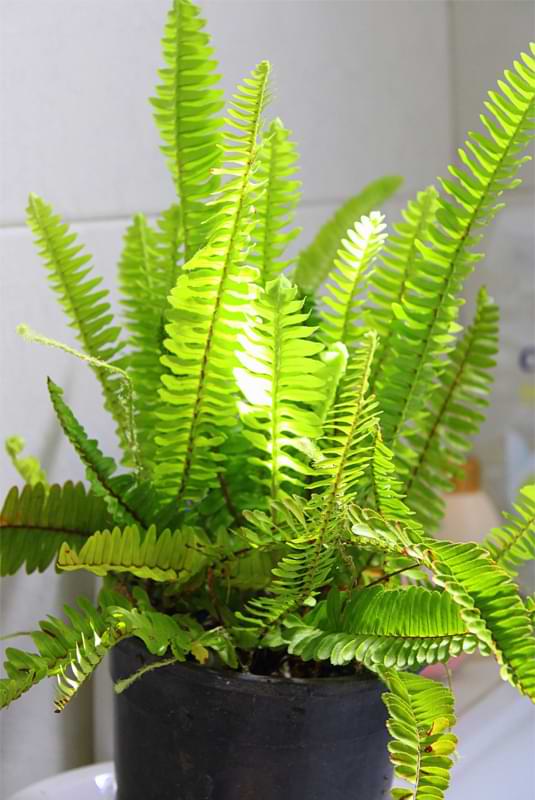
Nephrolepis exaltata (Boston fern)
This classic fern is the most common fern variety you’ll see indoors. Its long fronds are lined with delicate sword-shaped frills. This is one of the easier ferns to care for and the easiest to find by far, so this is a good place to start if you’re interested in adding ferns to your space.
Display your Boston fern in a hanging planter or a pot or basket on a table or shelf in a bright room.
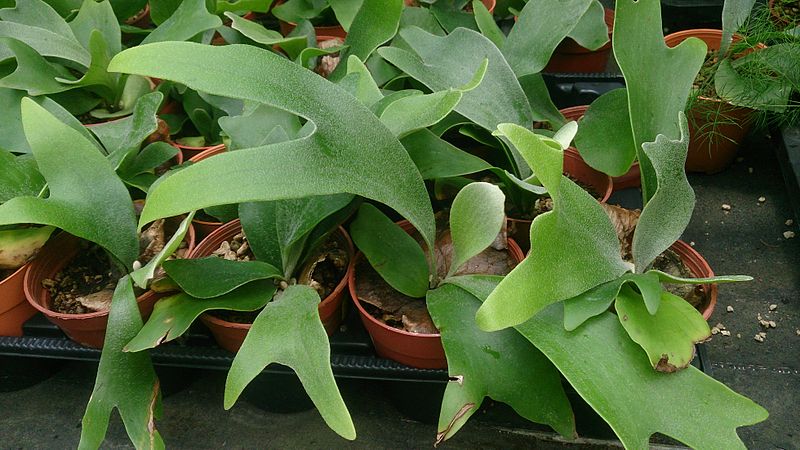
Platycerium (Staghorn Fern)
This striking fern gets its name from its unusual antler-shaped fronds. These plants are epiphytes, which mean that they grow on other trees and large plants in the wild. Many people display these plants mounted on wood (you know, like antlers), though you may find young ones planted in soil in your local nursery or online shops. You can buy them already mounted, which we recommend!
Staghorn ferns produce two kinds of fronds: the antler-shaped fronds that they’re known for, and shield fronds that grow around the root system. The shield fronds may dry out and harden, but don’t remove them. That’s normal!
Water by submerging the roots, board and all, in water for 10-20 minutes, or you can water overhead, soaking the root ball. Let your fern drip-dry before rehanging.
It’s an unusual plant, but unusual may be exactly what you’re looking for!

Adiantum raddianum (Maidenhair Fern)
Known for its beautiful, hand-shaped fronds, this plant is notorious for being difficult to care for, but this may be your dream plant if you like to dote on your houseplants! This plant requires consistently moist soil and high humidity, and it will be very unhappy if you slack off and let the soil dry out even a little bit. If you’re feeling up to a challenge, go for it!
Read our guide on caring for the maidenhair fern here!
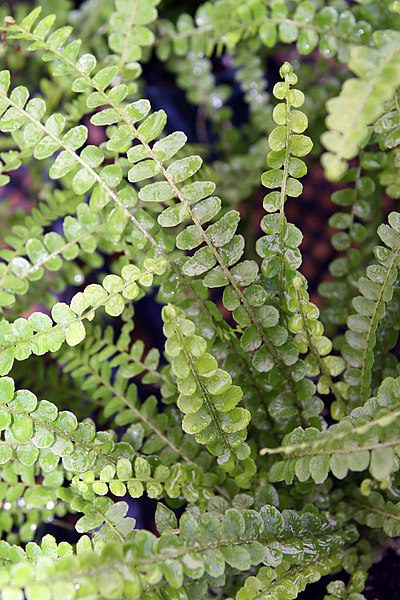
Nephrolepis cordifolia “Duffii” (Lemon Button Fern)
The only thing cuter than the name of this fern is the delicate, round leaves on its beautiful fronds. It also smells slightly lemony!
This fern tends to be easier to care for than some of its cousins, so this might be a good place to start if you’re nervous about keeping ferns alive. It’s not picky about its light and it’s much more flexible about its water needs than most other ferns. While it prefers consistently moist soil, it won’t die if you over-water it or let the soil get just a little too dry from time to time.
It’s the best of all worlds!
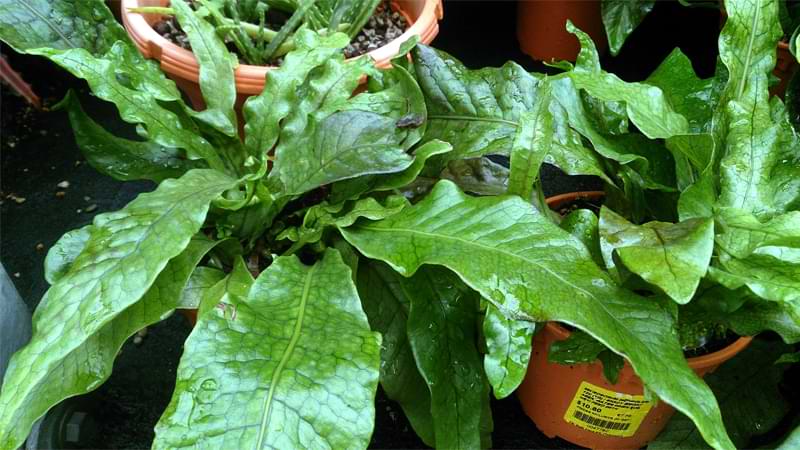
Microsorum musifolium (“Crocydyllus” Crocodile Fern)
You can recognize this unusual fern by its wide, flat, “scaly” leaves that resemble crocodile skin. Like the staghorn fern, this plant is an epiphyte, but unlike the staghorn, the crocodile fern is perfectly happy in a pot (though you can definitely mount it, we won’t stop you!).
Keep the soil evenly moist, and don’t forget to provide lots of humidity!
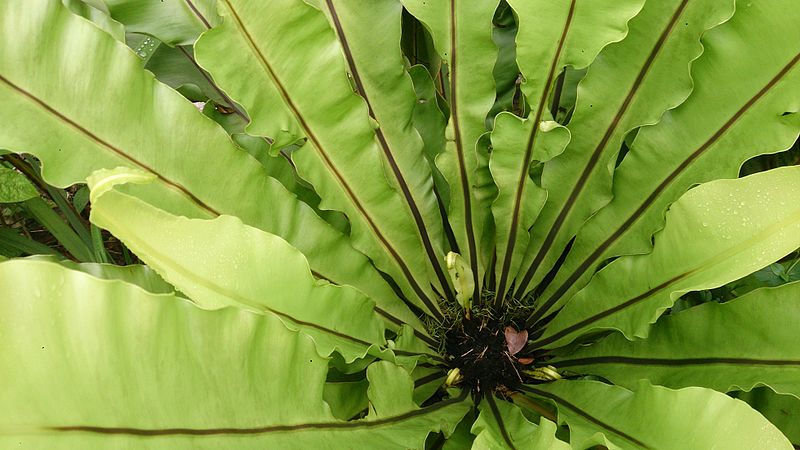
Asplenium nidus (Bird’s Nest Fern)
This fern has fun, light-green, ruffled fronds that form a rosette, and the area where the fronds emerge kind of looks like fuzzy bird eggs! These plants usually grow epiphytically in palm trees.
You’ll usually find this fern planted in soil, but you can mount it on wood as well.
Like the lemon button fern, this plant likes consistently moist soil but won’t die on you if you let it get a little dry every once in a while. When you do water, be careful to only water the soil and not pour water directly into the “nest” or center of the plant. This area is very delicate!
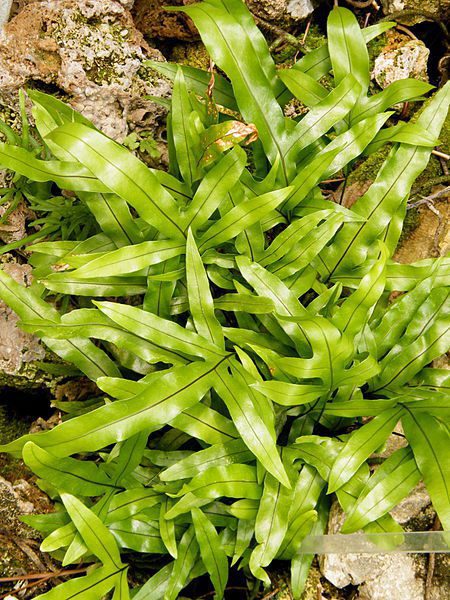
Microsorum diversifolium (Kangaroo Paw Fern)
This unusual fern tends to grow differently shaped and sized fronds, which gives it a bit of a wild and whimsical appearance. This plant can grow epiphytically but is more commonly potted and grown as a tabletop plant, much like the Boston fern. The usual fern rules apply here. Keep the soil consistently moist, keep out of direct sunlight, and give it as much humidity as you can!
Indoor Fern Care
Ferns have a reputation as challenging plants because they require so much water and humidity. But if you can get into a good groove with their care routine, you might find them very simple and satisfying to care for!
For all fern varieties, make sure to keep their soil (or root ball, if you’ve mounted your fern) evenly moist. Water when the top of the soil starts to dry out. Mist your fern at least daily (or even twice daily) or set up a humidifier nearby. You can also place your fern’s pot on top of a tray filled with pebbles and water, which creates some upward humidity as the water evaporates.
Whatever you do, keep ferns out of direct sunlight. Most fern varieties do well in bright, indirect sunlight or even lower light.
Fertilize monthly with a little Indoor Plant Food to provide the nutrients your fern needs for growth, and you’ll be good to go!

